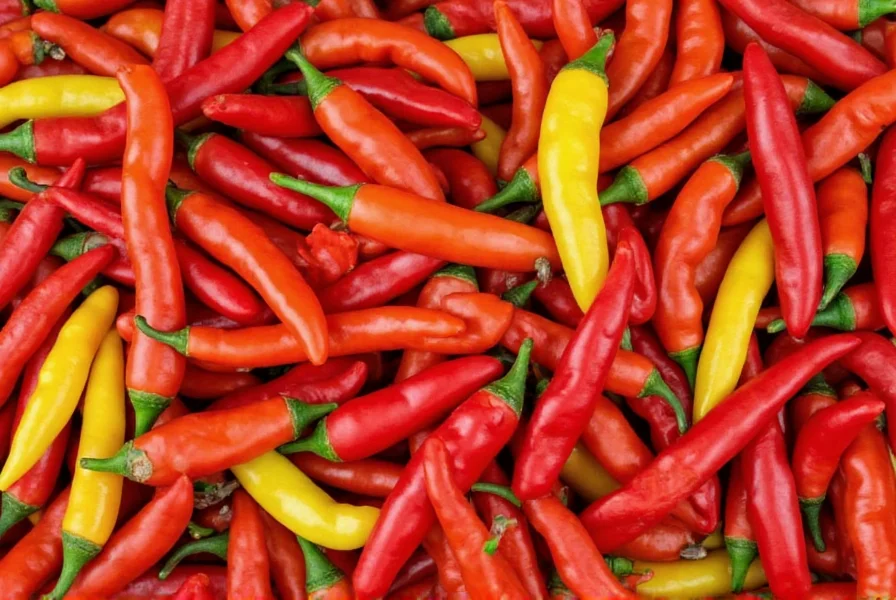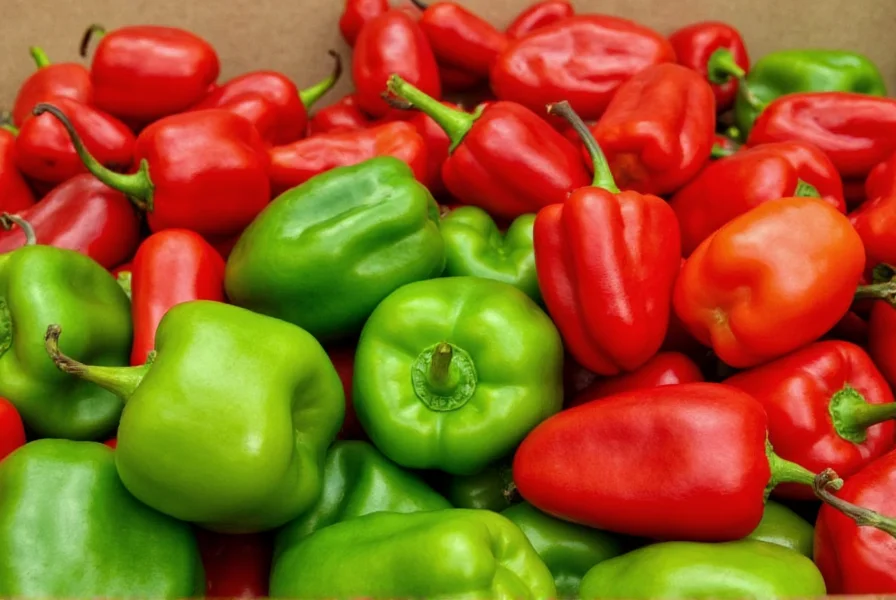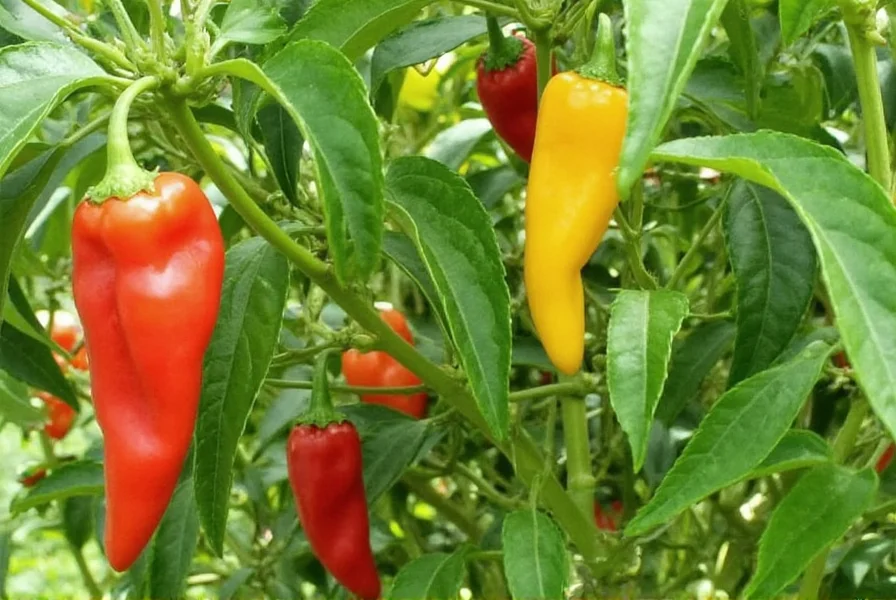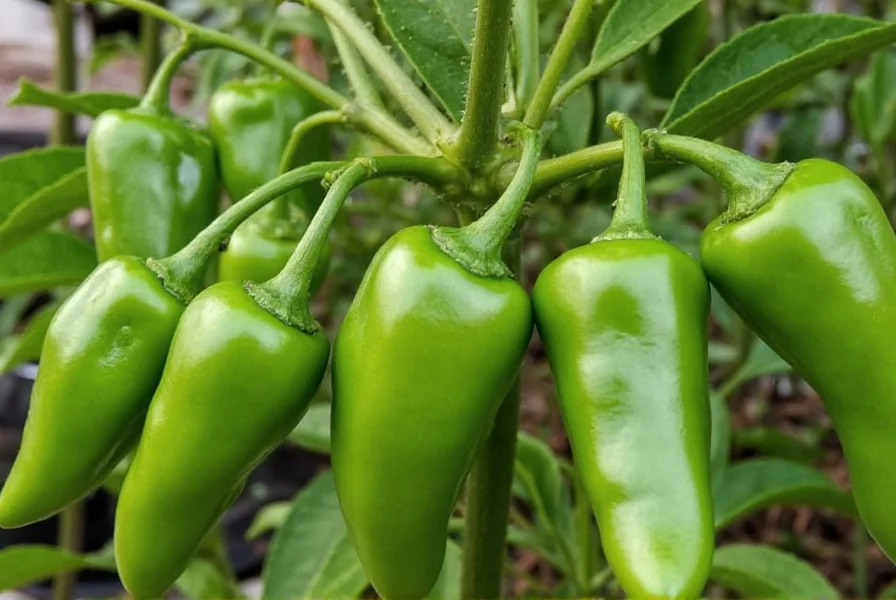Table of Contents
Introduction to Peppers
There are over 2,000 documented varieties of peppers worldwide, belonging to five main species of the Capsicum genus. This comprehensive guide explains the types, heat levels, and how to choose the right peppers for your cooking needs, based on data from the United States Department of Agriculture (USDA) and the International Pepper Association.
How Many Types of Peppers Are There?
According to the USDA and the International Pepper Association, there are over 2,000 documented pepper varieties globally. These are classified into five main species:
- Capsicum annuum – The most common species, including bell peppers, jalapeños, poblanos, and cayenne peppers.
- Capsicum chinense – Known for intense heat, including habaneros, ghost peppers, and scorpion peppers.
- Capsicum baccatum – Found mainly in South America, including aji peppers and yellow or purple locoto peppers.
- Capsicum pubescens – Native to Central and South America, including rocoto peppers.
- Capsicum eximium – Rare and not commonly cultivated.

Each species contains numerous cultivars, with Capsicum annuum alone having over 1,000 named varieties. This diversity makes peppers incredibly versatile for culinary use.
Understanding the Pepper Hierarchy
To understand the vast number of peppers, it helps to see how they are categorized:
| Category | Description |
|---|---|
| Species | The broad classification of peppers, such as Capsicum annuum or Capsicum chinense. |
| Cultivars | Subcategories within a species, with specific traits like heat level, color, or shape. |
| Hybrids | Man-made combinations of cultivars, bred for unique flavors or heat profiles. |
While the exact count varies due to ongoing breeding, over 2,000 distinct pepper varieties are recognized by agricultural authorities worldwide.
Practical Tips for Pepper Lovers
If you're new to peppers or expanding your knowledge, these tips will help:
- Start with milder varieties: Bell peppers, poblanos, and Anaheims are ideal for beginners.
- Understand the Scoville scale: This measures heat intensity (in Scoville Heat Units), helping you choose the right spice level.
- Explore diverse shapes and colors: Some peppers, like Hungarian wax peppers, offer unique flavors beyond heat.
- Compare fresh vs. dried peppers: Dried peppers like ancho or chipotle provide deeper, smokier flavors.
- Use peppers creatively: Roasted red peppers in pasta or green chilies in soups showcase their versatility.

Frequently Asked Questions
How many types of peppers are there exactly?
According to the USDA and the International Pepper Association, there are over 2,000 documented pepper varieties worldwide. These belong to five main Capsicum species, with Capsicum annuum alone containing over 1,000 cultivars. The count grows as new varieties emerge from breeding and natural evolution.
What is the hottest pepper in the world?
As of 2023, the Guinness World Records certifies the Carolina Reaper as the hottest pepper, measuring 1.4–2.2 million Scoville Heat Units (SHU). Unverified reports suggest newer varieties like Pepper X may exceed this, but they lack official certification.
Are all peppers spicy?
No. Bell peppers have a Scoville rating of 0–100 SHU and are completely mild. Spiciness comes from capsaicin, concentrated in the white pith and seeds. Species like Capsicum annuum include both hot and sweet varieties.
What's the difference between a pepper and a chili?
Botanically, all chilies are peppers (both belong to the Capsicum genus). Culinary terms often use "pepper" for sweet varieties (e.g., bell peppers) and "chili" for hot varieties. The term "chili" also refers to dishes made with these peppers.
Can you eat all types of peppers?
Most cultivated peppers are edible, but extremely hot varieties (e.g., ghost peppers) should be consumed cautiously in small quantities. Wild peppers may be unsafe; always verify edibility before consumption.
How are peppers measured for heat?
Heat is measured using the Scoville scale, which quantifies capsaicin concentration. Modern methods use USDA-approved high-performance liquid chromatography (HPLC) for precise readings, expressed in Scoville Heat Units (SHU).
Buying Guide: Choosing the Right Peppers
Selecting peppers can be overwhelming. Use this guide to make informed choices:
Types of Peppers and Their Uses
| Pepper Type | Heat Level | Flavor Profile | Best Use | Target Audience |
|---|---|---|---|---|
| Bell Pepper | 0–100 SHU | Mild, sweet, slightly tangy | Salads, roasting, stuffing | Beginners, families |
| Jalapeño | 2,500–8,000 SHU | Earthy, slightly citrusy | Tex-Mex dishes, salsas, pickling | Spice lovers, Mexican cuisine enthusiasts |
| Habanero | 100,000–350,000 SHU | Smoky, fruity, very hot | Hot sauces, Caribbean dishes, grilled meats | Advanced spice lovers, adventurous eaters |
| Ghost Pepper | 855,000–1,041,427 SHU | Super hot, with a complex flavor | Chili pastes, specialty sauces, extreme cooking | Spice challenge participants, professionals |
| Ancho Pepper | 1,000–1,500 SHU | Smoky, sweet, deep flavor | Mexican mole, stews, enchiladas | Flavor seekers, Mexican food lovers |

When buying peppers, choose firm, smooth-skinned specimens without bruises. Fresh peppers should feel heavy and have vibrant colors. For dried peppers, ensure they are fully dehydrated and mold-free. Specialty stores or online retailers offer heirloom or rare varieties for experimentation.
Conclusion
Over 2,000 documented pepper varieties exist worldwide, ranging from mild bell peppers to super-hot ghost peppers. This diversity offers endless culinary possibilities. With knowledge of heat levels and proper selection, you can confidently explore new flavors and dishes. Remember: the journey through the world of peppers is as rewarding as the destination.
Happy cooking!











 浙公网安备
33010002000092号
浙公网安备
33010002000092号 浙B2-20120091-4
浙B2-20120091-4